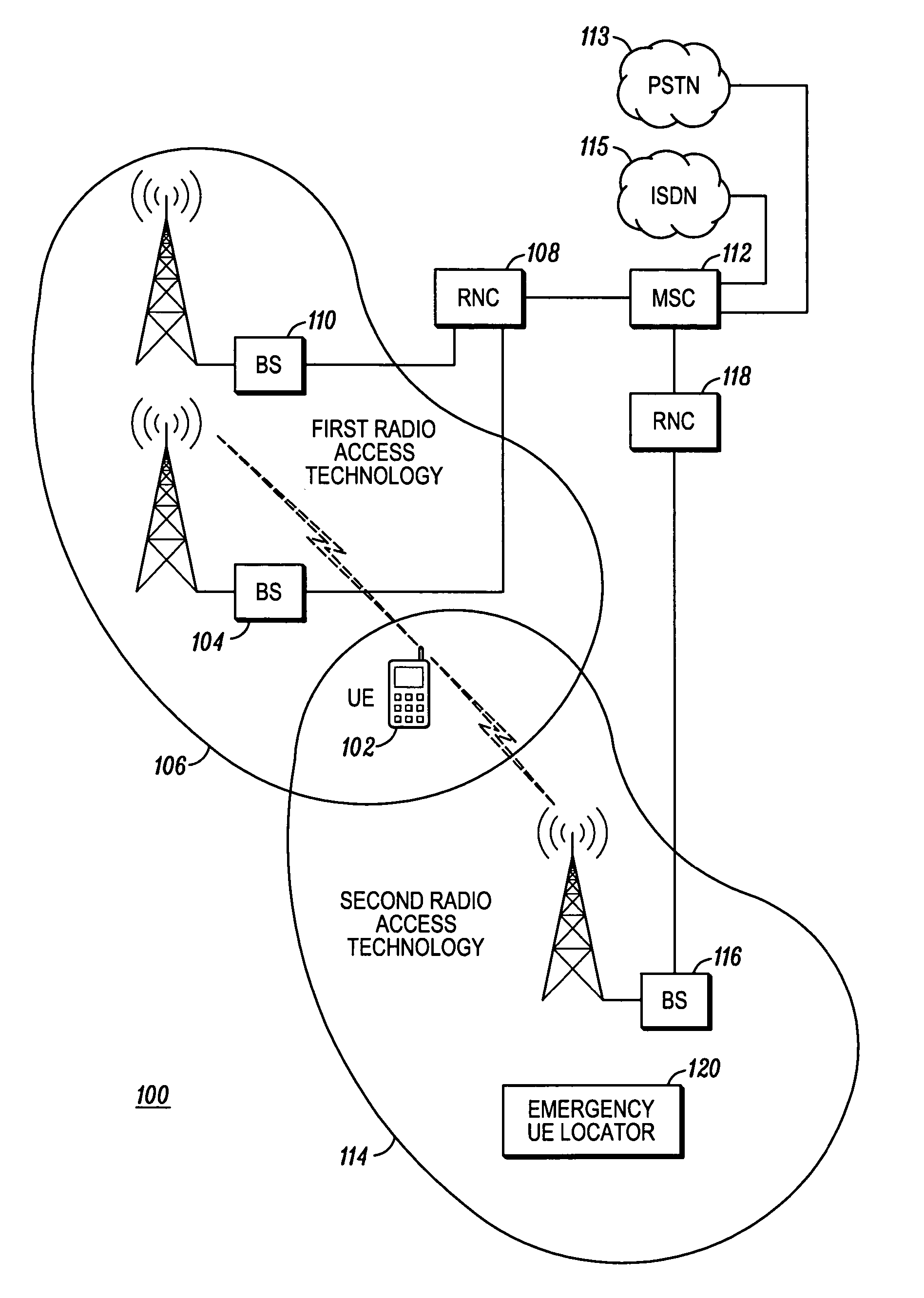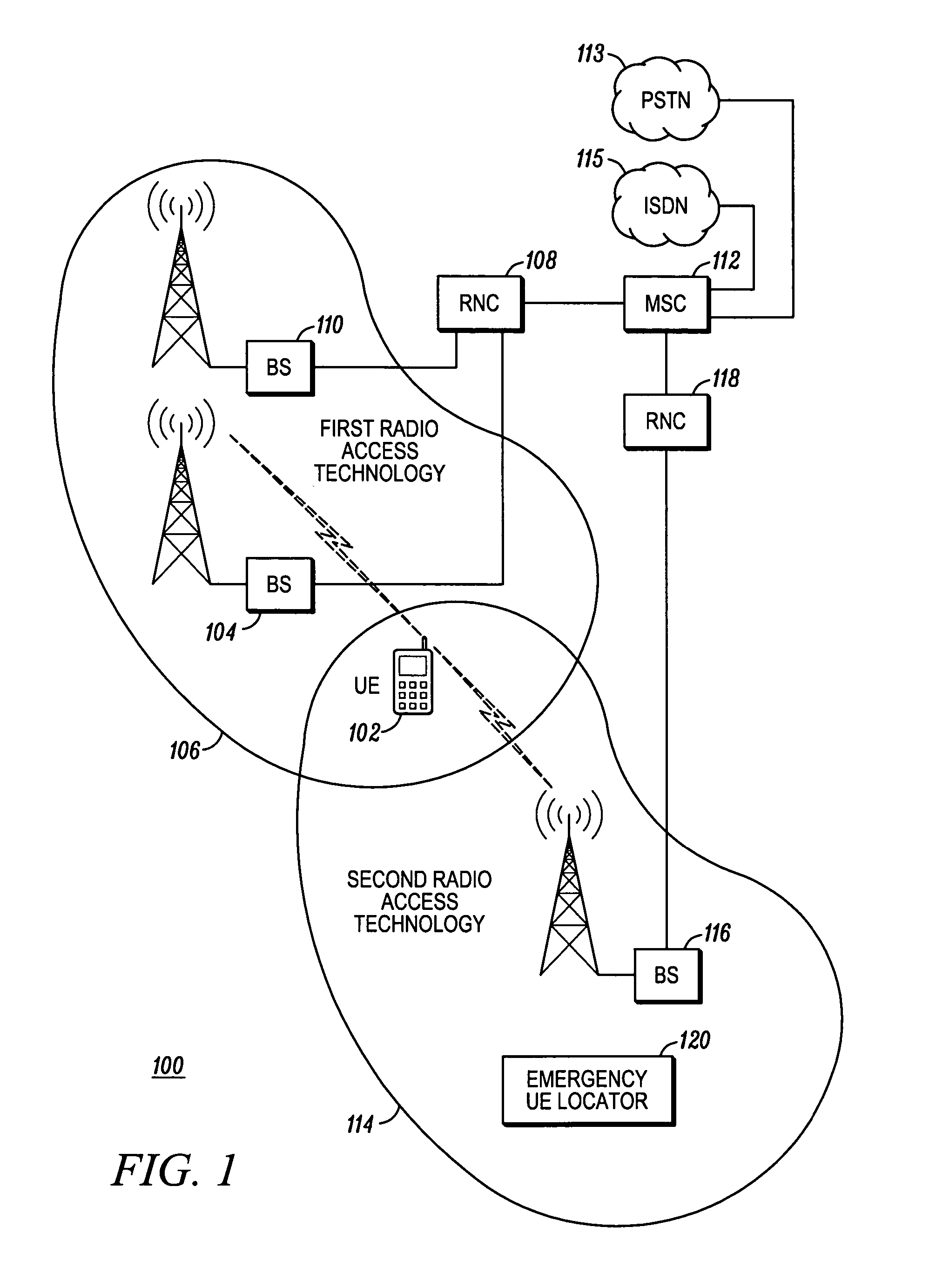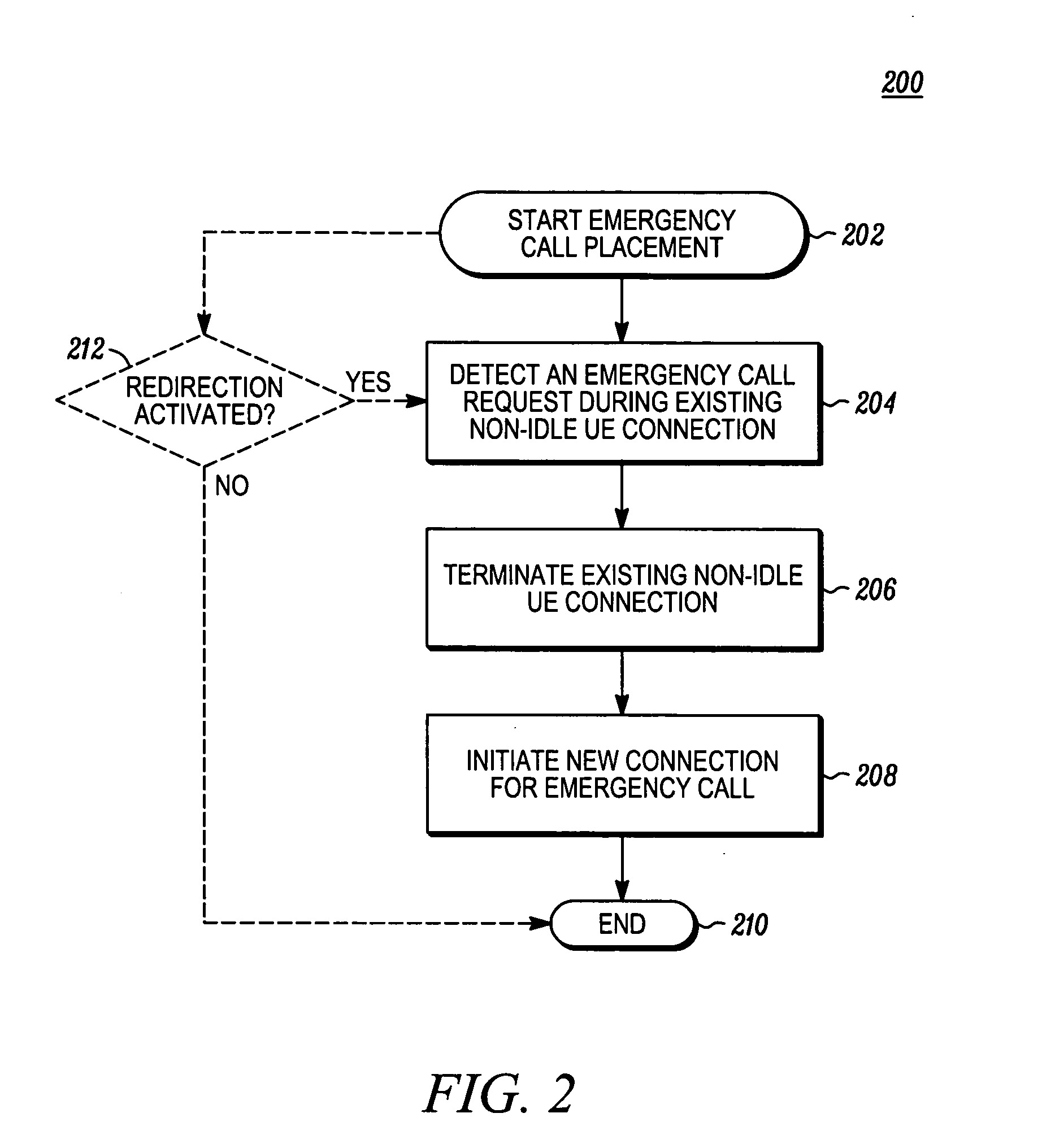Methods and apparatus for placement of an emergency call
a technology for emergency calls and methods, applied in the field of telecommunications, can solve problems such as increased costs for incumbents, lack of current infrastructure, and early deployment of 3g systems that may not support agps
- Summary
- Abstract
- Description
- Claims
- Application Information
AI Technical Summary
Problems solved by technology
Method used
Image
Examples
Embodiment Construction
[0011] The present disclosure describes an emergency call placement method for user equipment (UE) where the UE detects initiation of an emergency call placed via a first radio access technology (e.g., via a WCDMA network or other suitable network) during an existing or non-idle connection mode. The UE then terminates the existing connection mode and initiates a new connection for the emergency call. This method allows the UE to issue an RRC connection request to a wireless communication network operating, for example, according to the 3GPP specification such that the network may initiate a redirection procedure that, in turn, effects establishment of the emergency call on a second radio access technology (e.g., a GSM network or other suitable network) to perform device location using UTDOA location method.
[0012]FIG. 1 shows a simplified diagram of a mobile communication system 100 according to a disclosed example. In this system 100, a user equipment (UE) 102 communicates wireless...
PUM
 Login to View More
Login to View More Abstract
Description
Claims
Application Information
 Login to View More
Login to View More - R&D
- Intellectual Property
- Life Sciences
- Materials
- Tech Scout
- Unparalleled Data Quality
- Higher Quality Content
- 60% Fewer Hallucinations
Browse by: Latest US Patents, China's latest patents, Technical Efficacy Thesaurus, Application Domain, Technology Topic, Popular Technical Reports.
© 2025 PatSnap. All rights reserved.Legal|Privacy policy|Modern Slavery Act Transparency Statement|Sitemap|About US| Contact US: help@patsnap.com



